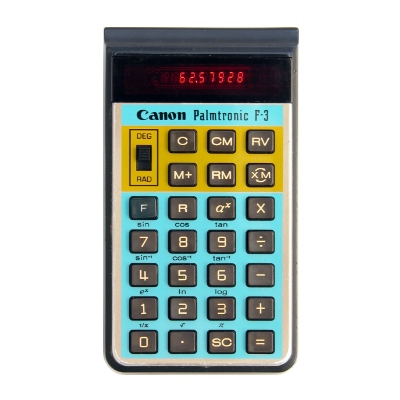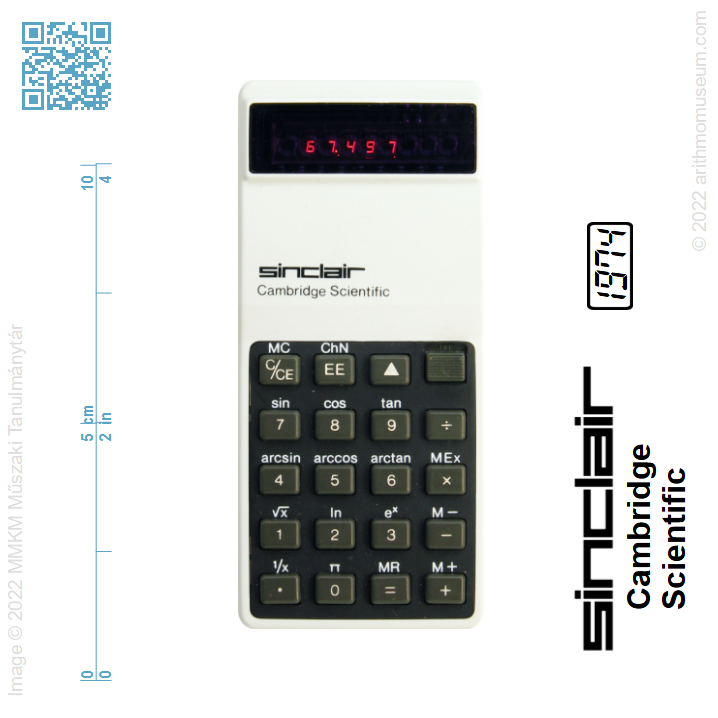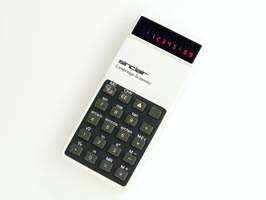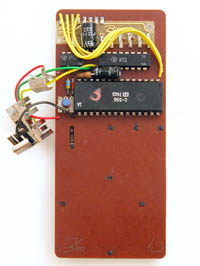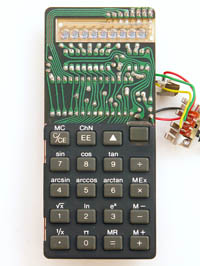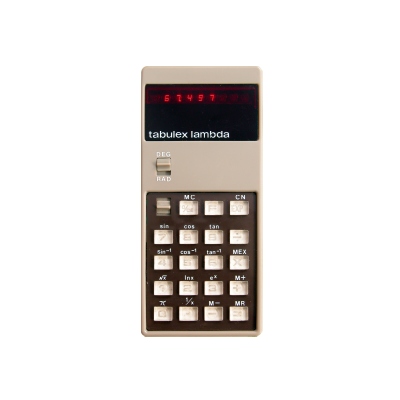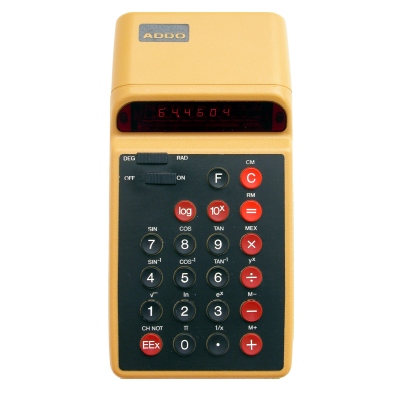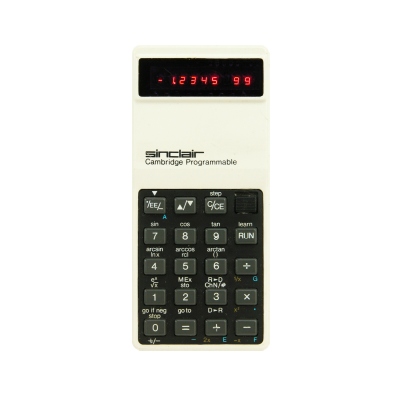Sinclair Cambridge Scientific
Brief History
Pocket calculators played an important role in the realization of Sir Clive Sinclair's miniaturization dreams. In 1972, the Sinclair Executive, which was thinner than any before, was completed. After its success, many companies embarked on similar projects. The second model, the Cambridge, was no longer intended to be an absolute record-breaker: it was designed with usability in mind, yet it was smaller than its predecessor and could be operated with AAA-sized penlight batteries. It was sold in kits which you can assemble at home. The Cambridge series was continuously expanded with newer models, and in 1974 the Sinclair Scientific appeared, which was placed in the housing of the Cambridge series. The Texas Instruments circuit was modified so that exponential notation, three usual trigonometric functions and its inverses, logarithm and antilogarithm could also be calculated with it within certain limits. The feat was successful, the smallest scientific calculator with the smallest ROM program providing scientific functions built ever was as successful as its predecessors. The continuous drop in prices made it possible to quickly replace that with the Cambridge Scientific, in which the simpler circuit of the General Instrument, but with much more functions operated. Interestingly, due to limited space, the degree-radian switch is located at the back, in the battery holder. Sinclair didn't stop, he soon came out with the world's smallest programmable scientific calculator.
This calculator belongs to the courtesy of Hungarian Museum of Science, Technology and Transport.
| Manufacturer: | Sinclair Radionics Ltd. (United Kingdom) |
| Mfg. date: | 1975-76 |
| Size: | 5,1Ã11,2Ã1,9 cm |
| Weight (ready for operate): | n.a. |
| Type: | scientific |
| Capacity: | 8/5+2 digits (input/display) 8+2 digits (internal precision) |
| Operating logic: | algebraic |
| CPU: | General Instrument C596 |
| Registers: | 2 standard (with saving the pending operation) 1 constant (with saving the pending operation) 1 memory (with aritmetic) |
| Features: | +/-change sign (direct entry of negative numbers) Ffloating-point notation Sciscientific (exponential) notation Sqrsquare root pivalue of pi (3.1415..) can be recalled 1/xreciprocal trigtrigonometrical functions (sin, cos, tan and inverses: arcsin, arccos, arctan) logexponential and logarithmical functions (10- and e-base) |
| Display: | 9 digit LED (Bowmar Optostic) |
| Power: | 2ÃAAA battery |
| Test results: | trigonometry:result of sin-1(cos-1(tan-1(tan(cos(sin(60°)))))), reference value: 60. 67.497 exponential:result of 0.999160000, reference value (first 14 digits): 3.0068804206375Ã10-70 - |
Similar items
